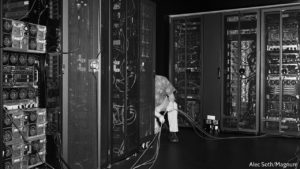https://www.economist.com/node/21805807?fsrc=rss%7Cbus
“WE ARE A community company committed to maximum global impact. Our mission is to elevate the world’s consciousness.” The opening lines of WeWork’s prospectus for its planned initial public offering in 2019 seem to confirm the worst about mission statements. People sit in a room earnestly discussing the differences between their purpose, their vision and their mission. There are whiteboards and bottles of kombucha. Nonsense ensues.
But even guff has meaning. For investors in young companies in particular, the mission statement sends useful signals. It articulates what a firm does and gives clues to where its priorities lie. Such information matters all the more when founders exercise outsized voting power. The WeWork prospectus helped elevate the consciousness of investors that the property company had lost its marbles. WeWork ended up scrapping both its listing and its boss.
To see why mission statements deserve more than an eye-roll, look first at entities that lack them. Of the 58 prospectuses filed with America’s Securities and Exchange Commission in the first two weeks of this month, more than a third were for special purpose acquisition companies. SPACs are a type of shell company whose goal is to raise money for an unspecified future deal. They are purposelessness incarnate.
“We have not identified any potential business combination target, and we have not, nor has anyone on our behalf, initiated any substantive discussions, directly or indirectly, with any potential business combination target,” runs a typical SPAC filing blurb. Investors have been warned: their money could end up pretty much anywhere.
Mission statements contain multitudes in comparison. They can tell you which stakeholders matter most to a firm. A tiny handful of the non-SPACs to have filed this month say their objective is shareholder returns (call it a Milton statement). Most couch their goals in terms of meeting customer needs.
Lulu’s Fashion Lounge says that its vision is to be the most beloved women’s brand for affordable luxury fashion. AirSculpt Technologies, a “body-contouring” firm, aims to produce the best results for its patients. This may be the age of purpose, but giving people what they want, whether they are looking for clothes or a “Brazilian butt-lift procedure”, is mission enough for many entrepreneurs.
The mission statement can also tell investors something about how technologically sophisticated a company is. Among this month’s filers there is a marked lack of flannel from GlobalFoundaries, a big semiconductor firm. But for simpler products and services, it is not enough to describe what an enterprise does. “We aim to help the customers in our communities live a good life by inspiring moments that create lasting memories,” burbles Solo Brands, whose biggest seller is a stainless-steel fire pit.
Similarly, you may have been under the impression that Krispy Kreme, which returned to public markets earlier in the summer, sells doughnuts. Wrong. “As an affordable indulgence enjoyed across cultures, races, and income levels, we believe that Krispy Kreme has the potential to deliver joyful experiences across the world.” That’s not icing on your face, it’s euphoria.
A mission statement also illuminates crispness of thinking. Of the firms to have filed this month, NerdWallet, a firm that provides reviews and comparisons of financial products, deserves most plaudits. “Our mission is to provide clarity for all of life’s financial decisions,” runs the prospectus. That is ambitious without being absurd, informative without being constraining.
Others are woollier. The prospectus for Rivian, an electric-vehicle manufacturer, says that it wants “to keep the world adventurous forever”. Prospective investors are told that “the part of us that seeks to explore the world is also the secret to making sure it remains a world worth exploring.” Yet the company’s near-term revenues depend on a big order from Amazon for its electric delivery van. The part of us that plans never to leave the house again may be the secret to Rivian thriving.
As for WeWork, it is back and chastened. Its public debut, via a merger with a SPAC called BowX, was due on October 21st. In a proxy statement issued by BowX in September, WeWork says it was founded in 2010 with a vision “to create environments where people and companies come together and do their best work”. No mission creep this time.
For more expert analysis of the biggest stories in economics, business and markets, sign up to Money Talks, our weekly newsletter.
This article appeared in the Business section of the print edition under the headline “Why mission statements matter”


















